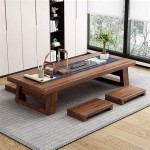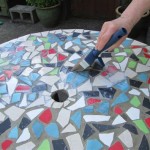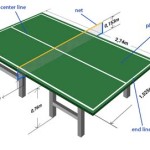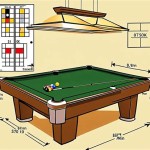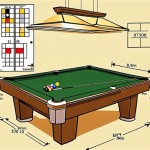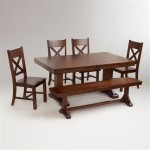How to Install Paintable Wallpaper Over Paneling
Many homes, particularly older ones, feature wall paneling. While paneling may have been a desirable design element in the past, it can sometimes appear dated and detract from a homeowner's aesthetic preferences. Removing paneling can be a labor-intensive and often messy process, potentially damaging the underlying drywall. Installing paintable wallpaper over paneling offers a viable alternative for updating a room's appearance without the extensive demolition work.
Paintable wallpaper, also known as paintable textured wallpaper, provides a unique surface for painting, allowing homeowners to customize the wall's texture and color. It’s designed to conceal imperfections and create a fresh, updated look. Applying it over paneling requires careful preparation and installation to ensure a smooth, long-lasting finish. This article outlines the steps involved in successfully installing paintable wallpaper over existing paneling.
Key Point 1: Preparing the Paneling Surface
Proper preparation is crucial for the successful adhesion and longevity of paintable wallpaper. The paneling must be thoroughly cleaned, sanded, and primed to create a suitable surface for the wallpaper. Neglecting these steps can result in the wallpaper peeling, bubbling, or failing to adhere properly.
The first step is a comprehensive cleaning of the paneling. Use a solution of warm water and a mild detergent to remove any dirt, grease, or grime. A degreasing cleaner may be necessary for areas with particularly stubborn stains or residue. Ensure all cleaning solution is thoroughly rinsed off with clean water and allow the paneling to dry completely. This drying process may take several hours, depending on the humidity and ventilation in the room.
Once the paneling is dry, inspect it carefully for any damage, such as loose nails, splinters, or cracks. Secure any loose nails with a hammer and countersink the heads slightly below the surface of the paneling. Fill any holes, cracks, or imperfections with wood filler. Apply the filler according to the manufacturer's instructions, ensuring it is flush with the surrounding surface. Allow the filler to dry completely before proceeding.
Sanding the paneling is essential for creating a textured surface that the wallpaper adhesive can grip. Use a medium-grit sandpaper (around 120-grit) to lightly scuff the entire surface of the paneling. Pay particular attention to any glossy or smooth areas, as these will require more aggressive sanding. The goal is not to completely remove the existing finish but to create a slightly roughened surface. After sanding, use a damp cloth to remove all sanding dust. Ensure the paneling is completely dry before moving on to the next step.
Priming the paneling is a critical step in preparing the surface for wallpaper. Primer seals the paneling, provides a uniform surface for adhesion, and helps prevent the wallpaper adhesive from being absorbed into the paneling. Use a high-quality oil-based or stain-blocking primer specifically designed for use on wood surfaces. Apply the primer evenly using a brush or roller, following the manufacturer's instructions. Allow the primer to dry completely before proceeding with the wallpaper installation. Depending on the primer, this may take several hours or even overnight.
Key Point 2: Installing the Paintable Wallpaper
Installing paintable wallpaper requires careful measurement, accurate cutting, and proper application of adhesive to ensure a professional-looking result. Taking the time to do this correctly will prevent costly mistakes and ensure the wallpaper adheres properly to the prepared paneling surface.
Begin by measuring the height of the wall from the baseboard to the ceiling. Add a few inches to this measurement to allow for trimming at the top and bottom. Cut the first strip of wallpaper to this length using a sharp utility knife and a straight edge. It's advisable to work on a clean, flat surface. When cutting multiple strips, pay close attention to the wallpaper pattern if applicable, ensuring proper alignment for a seamless look. Number each strip on the back in the order it will be applied to avoid confusion later.
Apply the wallpaper adhesive to the back of the wallpaper strip, following the manufacturer's instructions. Different types of wallpaper may require different types of adhesive and application techniques. Some wallpapers are pre-pasted and require only water activation, while others require a separate adhesive to be applied. Ensure the adhesive is applied evenly and thoroughly, paying particular attention to the edges of the wallpaper. Fold the wallpaper strip, adhesive side to adhesive side, in a "booking" process. This allows the adhesive to activate and prevents it from drying out. Follow the manufacturer's recommended booking time, typically around 5-10 minutes. Booking helps to relax the wallpaper and allows for easier installation.
Position the first strip of wallpaper at the top of the wall, aligning it with the ceiling and one corner. Leave a slight overlap at the top and bottom for trimming. Use a smoothing tool, such as a plastic smoother or a clean, damp cloth, to smooth the wallpaper onto the paneling. Start at the center of the strip and work your way outwards, removing any air bubbles and ensuring good contact between the wallpaper and the primed paneling. Be careful not to stretch the wallpaper, as this can cause it to shrink later. Work quickly and efficiently to prevent the adhesive from drying out.
Trim the excess wallpaper at the top and bottom using a sharp utility knife and a straight edge. Use the edge of the baseboard and ceiling as guides for a clean, straight cut. After trimming, use a damp sponge to wipe away any excess adhesive from the wall and the wallpaper surface. Repeat the process for each subsequent strip of wallpaper, carefully aligning the edges to create a seamless appearance. Pay attention to the pattern matching when installing patterned wallpaper. Overlap the seams slightly if the wallpaper manufacturer recommends it.
When installing wallpaper around corners, measure and cut the wallpaper to fit, allowing for a slight overlap onto the adjacent wall. Use a utility knife to make a clean cut at the corner, creating a sharp, crisp edge. Smooth the wallpaper onto the adjacent wall and trim any excess. For inside corners, it may be necessary to cut a small slit in the wallpaper to allow it to conform to the corner. Outside corners require careful wrapping and trimming to prevent the wallpaper from tearing or peeling.
Key Point 3: Painting the Wallpaper and Final Touches
Painting the paintable wallpaper is the final step in transforming the paneling. Choosing the right paint and application technique is essential for achieving the desired aesthetic. After painting, minor touch-ups and careful inspection complete the project.
Once the wallpaper is installed and the adhesive is completely dry (usually 24-48 hours), it's time to paint. Choose a high-quality latex paint in your desired color and sheen. Latex paint is durable, easy to clean, and provides a good finish for textured wallpaper. Consider using a primer specifically designed for paintable wallpaper to ensure optimal paint adhesion and coverage.
Apply the paint using a roller or a brush, depending on the texture of the wallpaper and your personal preference. A roller is generally faster and more efficient for covering large areas, while a brush is better for getting into tight corners and intricate details. Apply the paint evenly, using long, smooth strokes. Avoid applying too much paint at once, as this can cause drips and runs. It is generally recommended to apply two coats of paint for a uniform and durable finish. Allow the first coat to dry completely before applying the second coat.
After the paint has dried, inspect the walls carefully for any imperfections, such as missed spots or uneven paint coverage. Touch up any areas as needed using a small brush. Be careful not to over-paint, as this can create a build-up of paint and detract from the overall appearance.
Finally, clean up any paint splatters or drips using a damp cloth. Replace any trim or molding that was removed during the installation process. Step back and admire your newly transformed room. By carefully following these steps, homeowners can successfully install paintable wallpaper over paneling, creating a fresh, updated look without the hassle of removing the existing paneling.

Can I Hang Wallpaper Over Wood Panels
Interior Design Is There A Wallpaper I Can Use To Hide Wood Paneling And Make The Wall Look More Like Regular Painted Sheet Rock Quora

Can You Wallpaper Over Wood Paneling 5 Steps Guide

Can You Install Wallpaper Over Paneling Apex

Transform Your Home With L And Stick Wallpaper The Design Twins

Best Paintable Beadboard Wallpaper Better Than Real Bb

Bedroom Makeover Before Painting Wallpaper And Panelling Wonder Forest

3 Ways To Cover Wood Paneling Wikihow

Superfresco Wood Panelling White Paintable Wallpaper 112590

3 Ways To Cover Wood Paneling Wikihow



